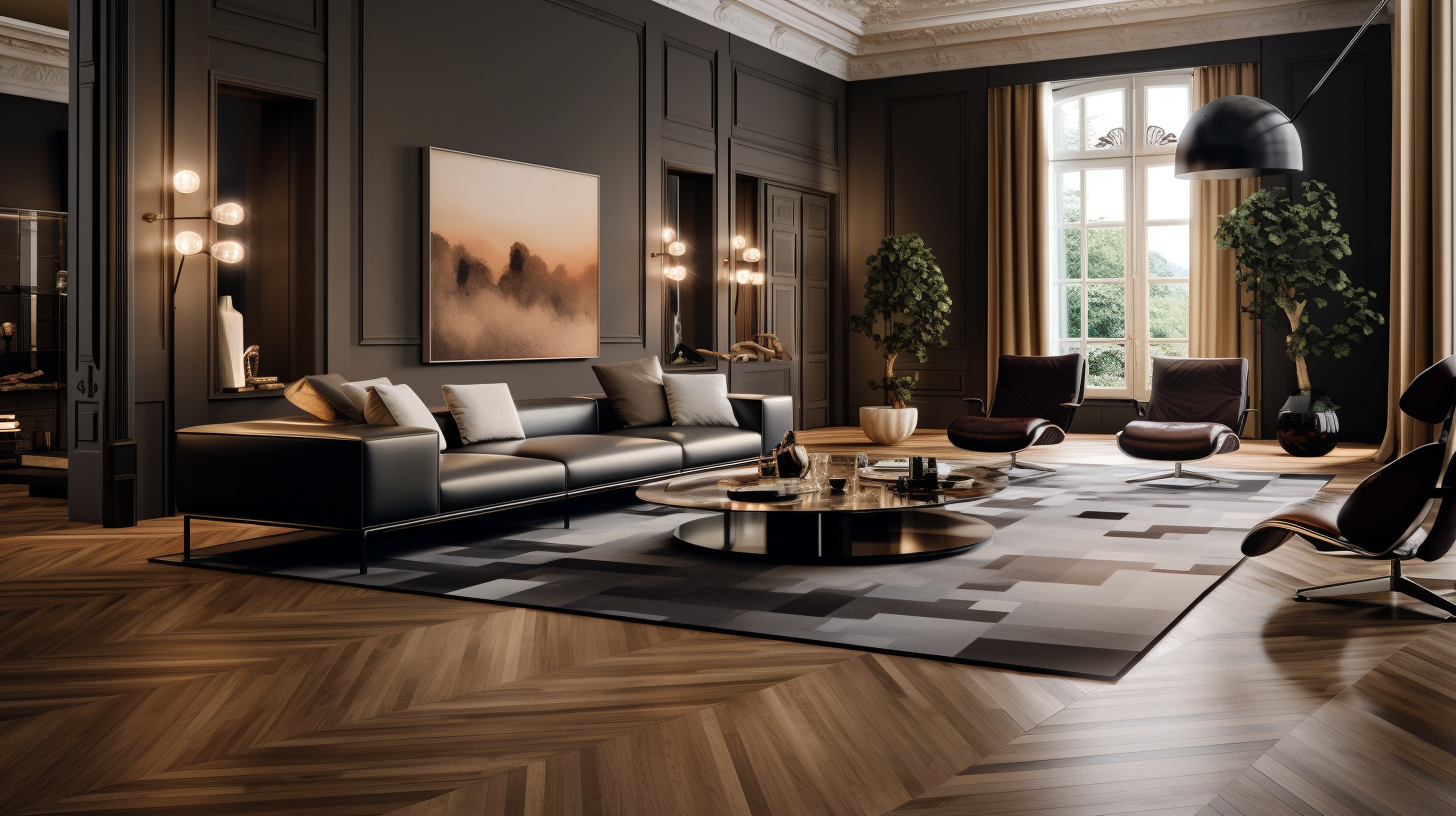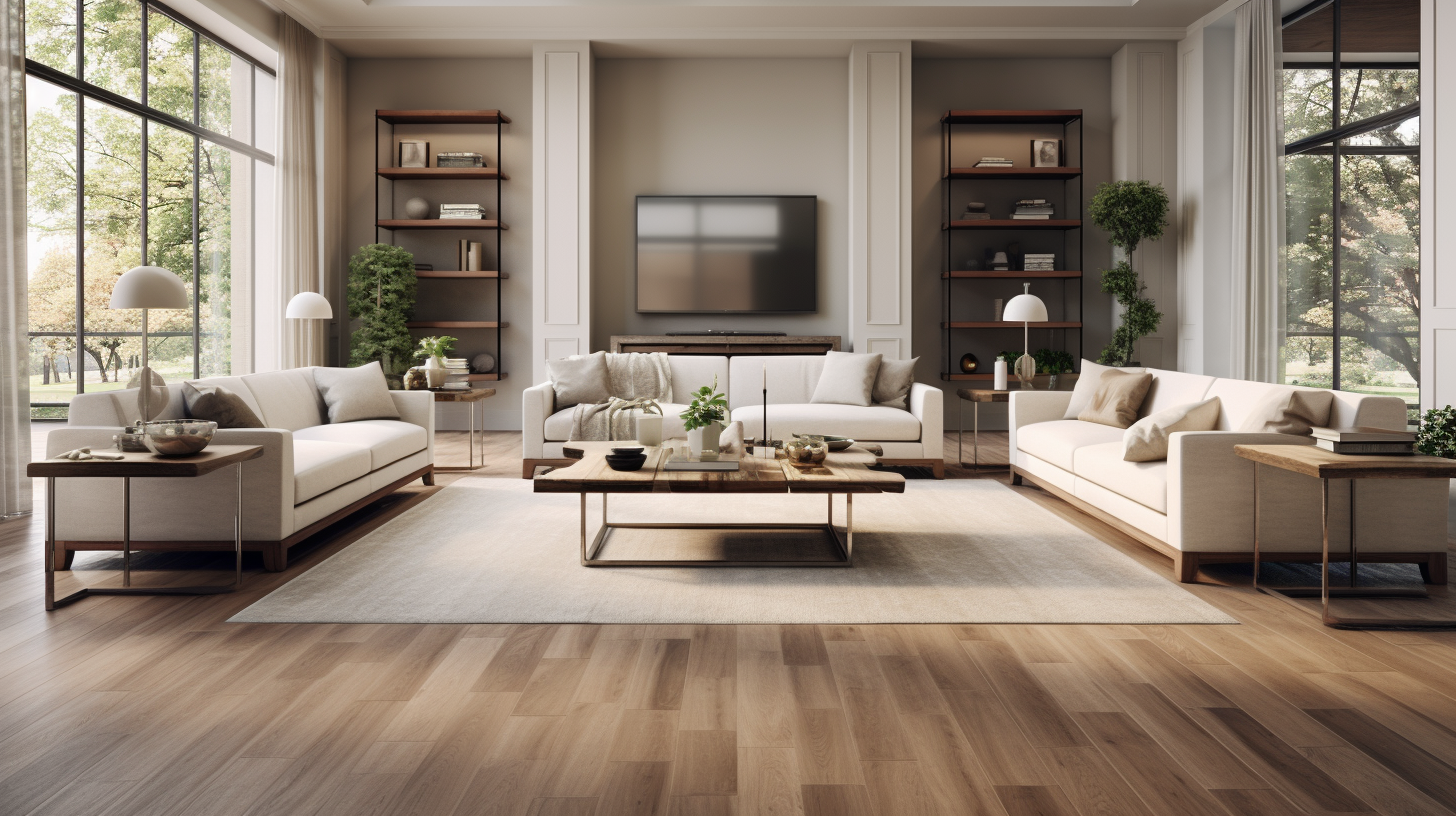In the realm of luxury home design, the foundation of any room’s character is its flooring. Designer floors are not just a surface to walk on; they are a canvas that reflects your style and elevates your living space. In this post, we will explore three pivotal ways designer floors can transform your living room into a bastion of elegance and comfort.

1. Selecting the Perfect Material: A Marriage of Durability and Style
The choice of material for your designer floor is crucial. It’s the first step in ensuring that your living room not only radiates luxury but also stands the test of time. For a high-end feel, hardwood floors are an exemplary choice. Oak, walnut, and maple provide a timeless appeal, blending classic and modern aesthetics seamlessly. Each wood type brings its unique hue and grain, adding an organic, warm touch to your living space.
If you’re leaning towards a more contemporary look, consider polished concrete or luxury vinyl tile (LVT). Polished concrete floors offer a minimalist, yet sophisticated, look with their smooth finish and subtle sheen. LVT, on the other hand, provides versatility in design while maintaining durability. It can mimic the look of natural wood or stone, allowing you to achieve a high-end appearance without compromising on practicality.
2. Custom Patterns and Finishes: Crafting a Unique Ambiance
The allure of designer floors lies in their ability to be customised. Bespoke patterns, such as herringbone or chevron, can add dynamism to your living room. These patterns create visual interest and can make the space appear larger. For a more avant-garde approach, geometric patterns or custom inlays can be incorporated, making your floor a statement piece in itself.
Finishes also play a pivotal role in defining the room’s character. A high-gloss finish can reflect light, brightening up the room and creating an airy feel. Conversely, a matte finish offers a more subdued, sophisticated look. The finish you choose should complement the overall design theme of your living room, whether it’s contemporary chic or traditionally elegant.
For insights into lighting designs, check out our blog here


3. Colour Coordination: Harmonising with Your Living Room Palette
Colour is a powerful tool in interior design, and this extends to your choice of flooring. The colour of your designer floor should harmonise with the overall palette of your living room. For a harmonious look, opt for flooring that complements your furniture and wall colours. Neutral tones like beige, grey, or light brown offer flexibility and can easily blend with different colour schemes.
For those looking to make a bolder statement, darker floors can provide a stunning contrast, especially in rooms with ample natural light. This contrast can be the cornerstone of your living room’s design, creating a focal point that draws the eye and adds depth to the space.
In conclusion, designer floors are more than just a functional aspect of your living room – they are the foundation of your home’s luxury and style. By carefully selecting the right material, customizing patterns and finishes, and coordinating colors, you can transform your living space into an epitome of elegance and comfort. Remember, your floor is not just a surface; it’s the starting point of your home’s story. Embrace the luxury of designer floors and watch as your living room evolves into a space of beauty and refinement.
